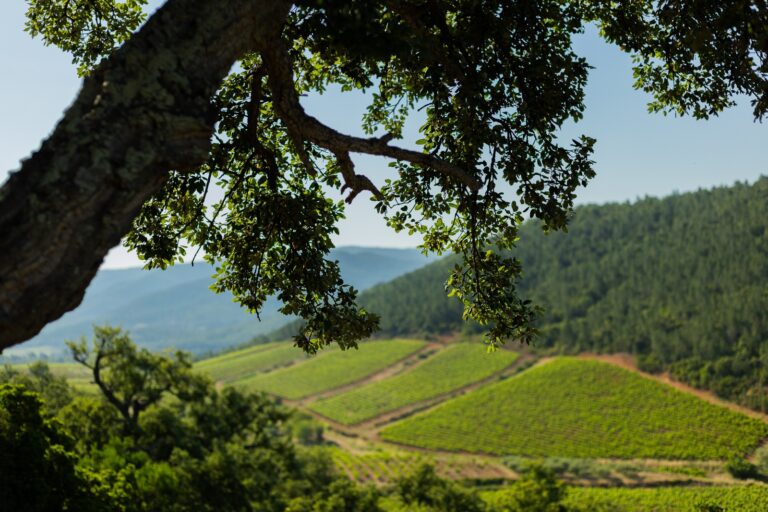No Till viticulture in Alsace
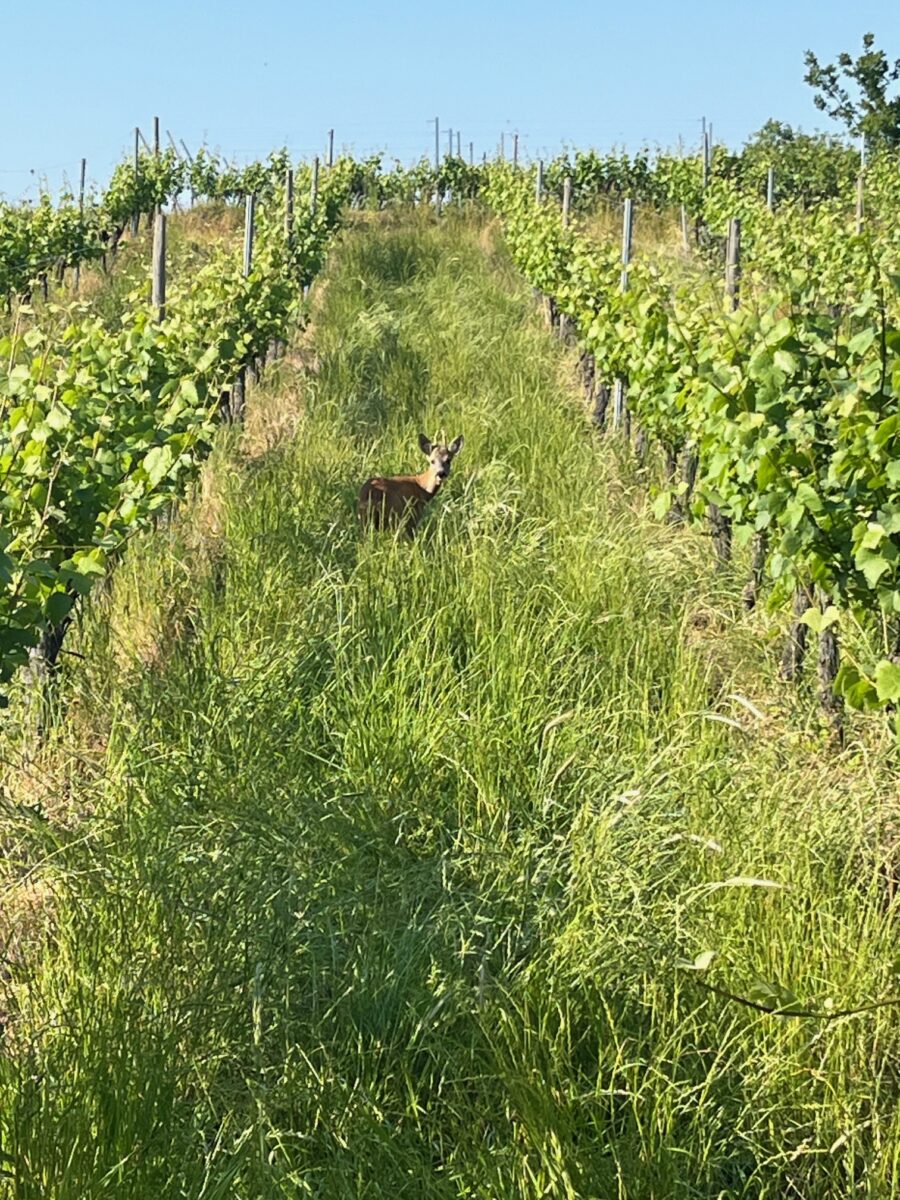
August 2024
Epfig, Alsace
This week we report from organic estate Domaine Bader in Epfig, Alsace, and the weather theme has been consistent with the rest of Northern France – rainy and wet!
Since the end of the 2023 harvest, the weather has been dominated by rain. From October to June, the Fronholz station recorded a total rainfall three times higher than normal (1000 mm).
Vintage 2024
The winter was mild and budburst very early, exposing the vines to several bouts of frost risk, but without any damage.
Spring, on the other hand, was unusually cool, dark and very rainy. Vegetation stagnated a great deal. May saw a total of 180 mm of rain…! Downy mildew attacks were unusually violent, with severe losses in some areas.
Flowering was quite late, on 10-15 June, two weeks later than in recent vintages. This means that we can expect the harvest to take place on 15 September. With the exception of the plots badly affected by mildew, where the harvest will be very small (Pinot Noir, Pinot Gris), maturity will be reached much more quickly.
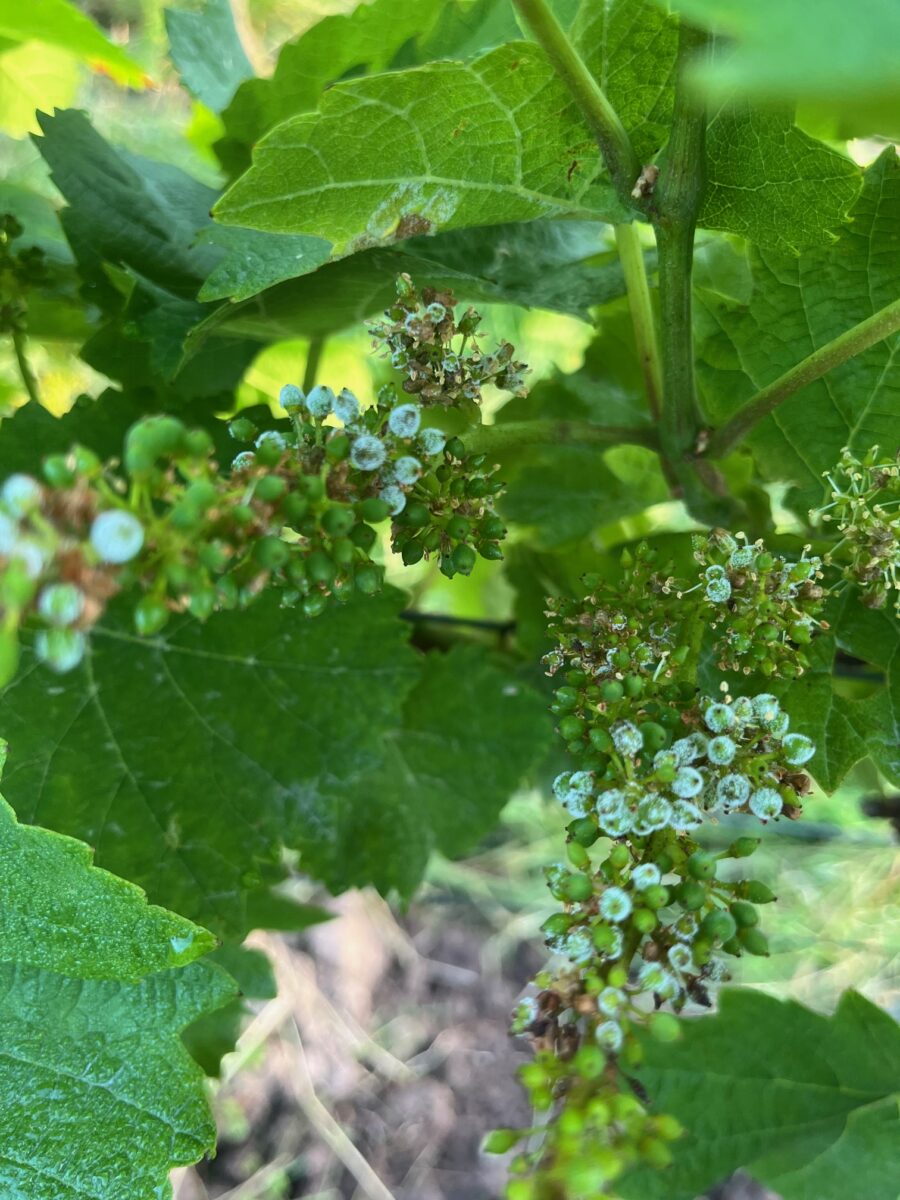
Organic protection against diseases
In the vineyards, the highlights of this vintage will undoubtedly be the excess water and the major difficulties encountered in protecting the vegetation from parasitic fungi.
In organic production, Domaine Bader uses natural elements, mainly copper and sulphur, supplemented with various infusions (this year: nettle, horsetail, thyme, orange peel oil).
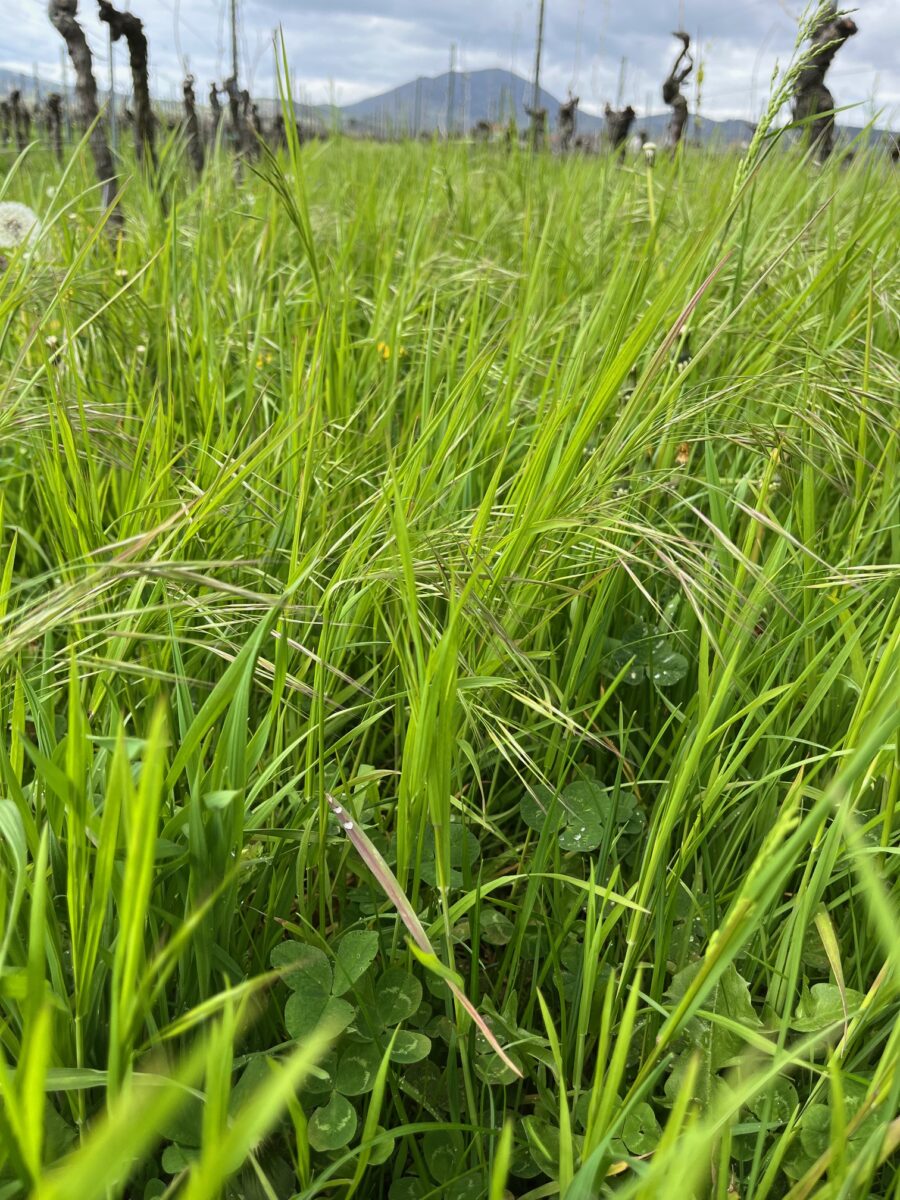
No-till farming at Domaine Bader
The aim has always been to bring the soils back to life, rich in organic matter and biodiversity. The means of achieving this have evolved over the last decade.
For the last 5 years, the approach has been based on two pillars:
- No-till has become the norm because it fulfils these objectives. Soil flora diversifies. The mulch formed increases the organic matter content, almost like a soil “sponge”, which cools the soil temperature and protects the microfauna from the sun’s normally strong UV rays.
- The addition of quality compost is vital, as it acts like a leavening agent and maintains the cycle of organic matter.

Working with No-till in rainy 2024
Quite frankly, this practice is less useful in wet conditions. However, in order to promote biodiversity, vigneron Pierre Scharsch wanted to let all the species go through their germination cycle.
With a surplus of water, the canopy has never been so high and dense. It helped to maintain humidity, which in turn encouraged the pressure of parasitic fungi.
Overall, soil type is not a limiting factor for no-till, but everyone benefits. In light soils, the advantage is better water retention. In heavy soils such as Fronholz marl, no-till improves the physical properties of the soil, making it less hostile to microbial life.
Wines Currently Available

2023 Skin Masceration Gewurztraminer
8-day skin-contact maceration period, dry wine, no sulphites
Sylvaner 2022
Dry and fresh
Floral nose and refreshing mouth
Easy to pair with shellfish, delicatessen, salads, fish.
Ageing potential : 2 to 3 years
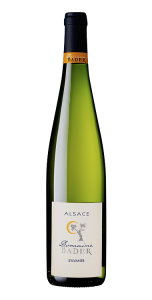
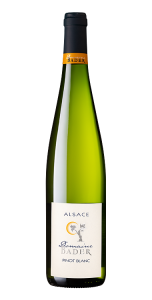
Pinot Blanc 2023
Dry and fruity
Nice fruity nose, slightly brioched. rich and supple on the palate.
It easily accompanies many simple and convivial dishes, quiches, pies, cold buffets,
flamed pies.
Ageing potential: 2 to 3 years
Riesling 2023
Dry, fruity and mineral
The nose of a beautiful finesse evokes citrus and minerality. The palate, long and
structured, is sustained by a beautiful liveliness.
Gastronomic wine with its structure and finesse, Riesling goes well with seafood, fish and white meats.
Ageing potential: 3 to 5 years

Pinot Gris 2023
Rich and powerful
The nose offers a subtle palette of dried fruit notes, yellow fruits and roasting. The palate reveals an ample and warm wine. Wishing to offer a gourmet Pinot Gris, its roundness is discreet.
This wine finds a place at the table with meat appetizers, mushroom dishes, duck and veal.
Ageing potential: 3 to 5 years
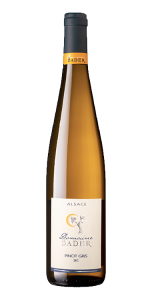

Pinot Noir 2023
Supple and crunchy
Nose with notes of black cherry and toasted notes. The palate is structured by fine tannins and a delicately juicy finish. As a good light red wine, it will not disappoint you by accompanying a barbecue, charcuterie or a grilled chicken.
Ageing potential: 5 years
Crémant
Our crémant grapes come from Chardonnay and Pinot Noir vines, sheltered under the village, on a deep loamy soil that gives fruitiness and smoothness. Our Crémant d’Alsace brut (raw), with a nose of mirabelle and fresh butter, is singular by the nobility of its bubbles.
The “brut” dosage leaves a great liveliness in the mouth.
Ideal as an aperitif, during a cold buffet, or to refresh a meal end
To guard: 3 to 5 years


Riesling Erdengott
The wine comes from the plot Fronholz, planted in 1947 at the top of the hill ventilated with a south-west exposure. In surface you find mostly sand, and deep undreground, you can find of sandstone and clay that only the age of the vines allows to express through a fine minerality.
Like most of the greatest mineral Rieslings, this wine show its bright typicity through citrus fruit and flint notes. On the palate, it acknowledges a nice gastronomic wines, with a saline and delicate acidicty.
Ageing potential: 8 to 10 years
